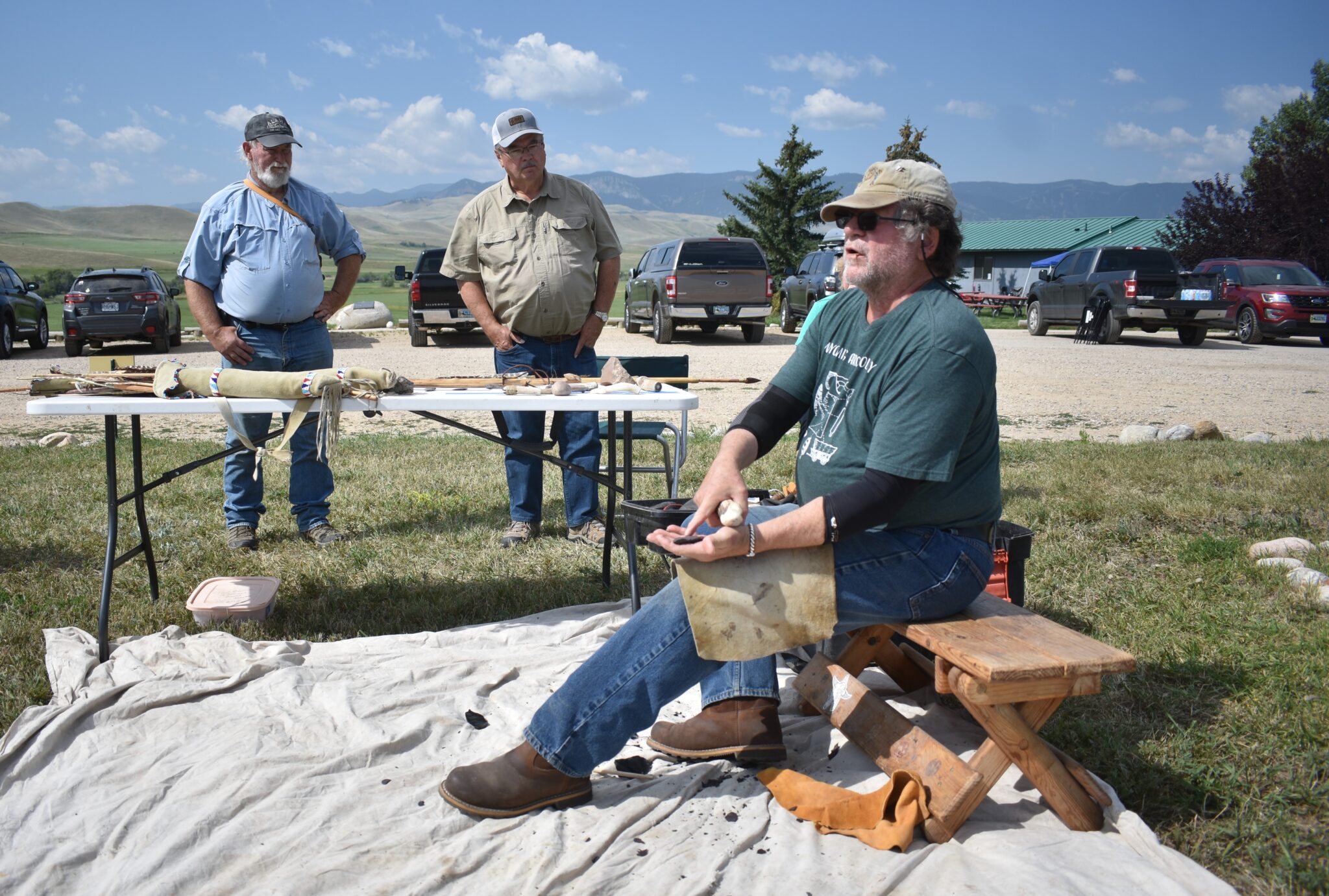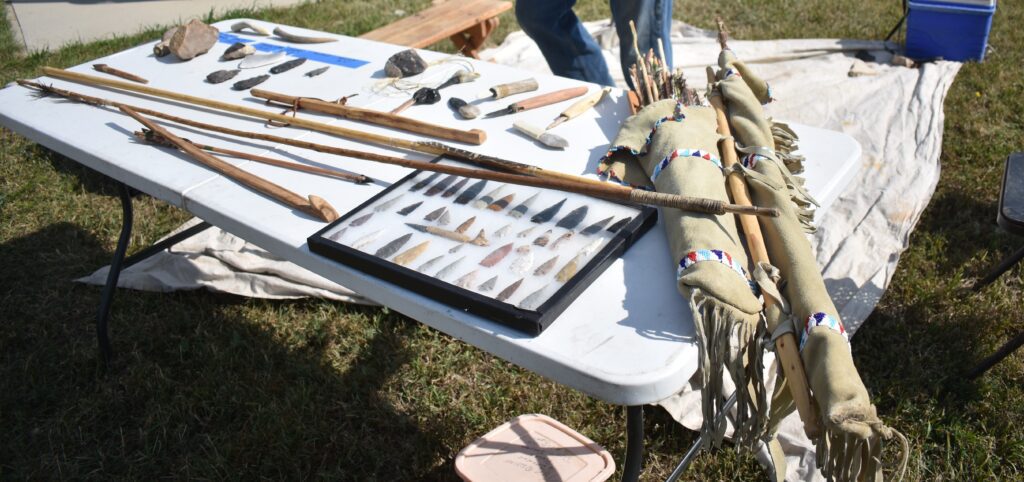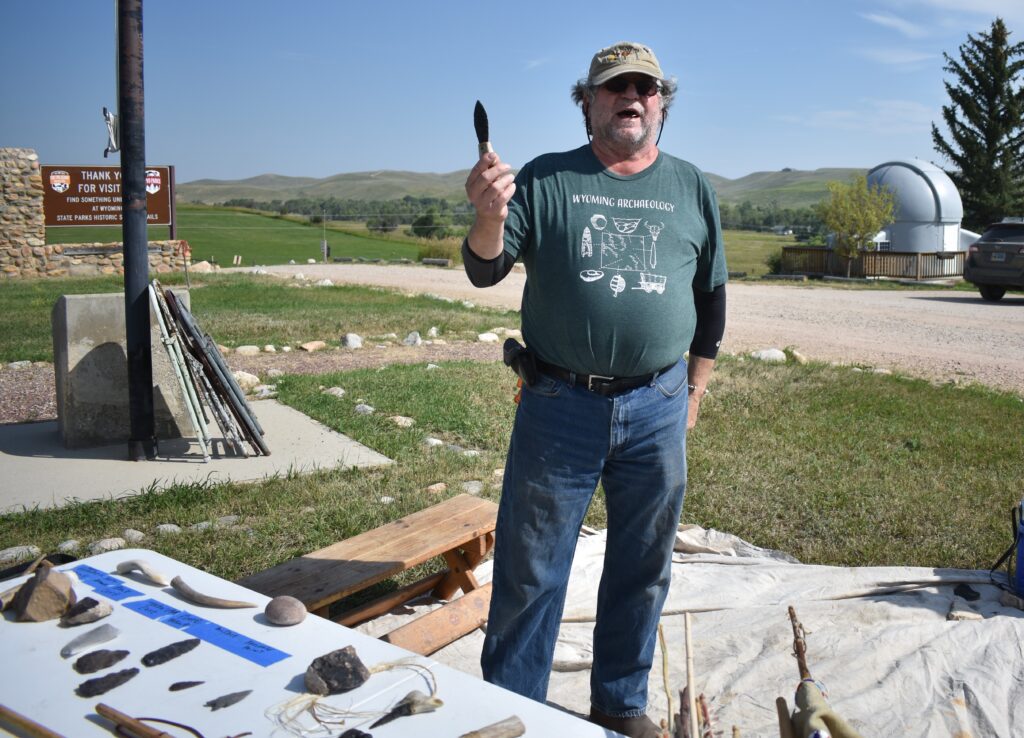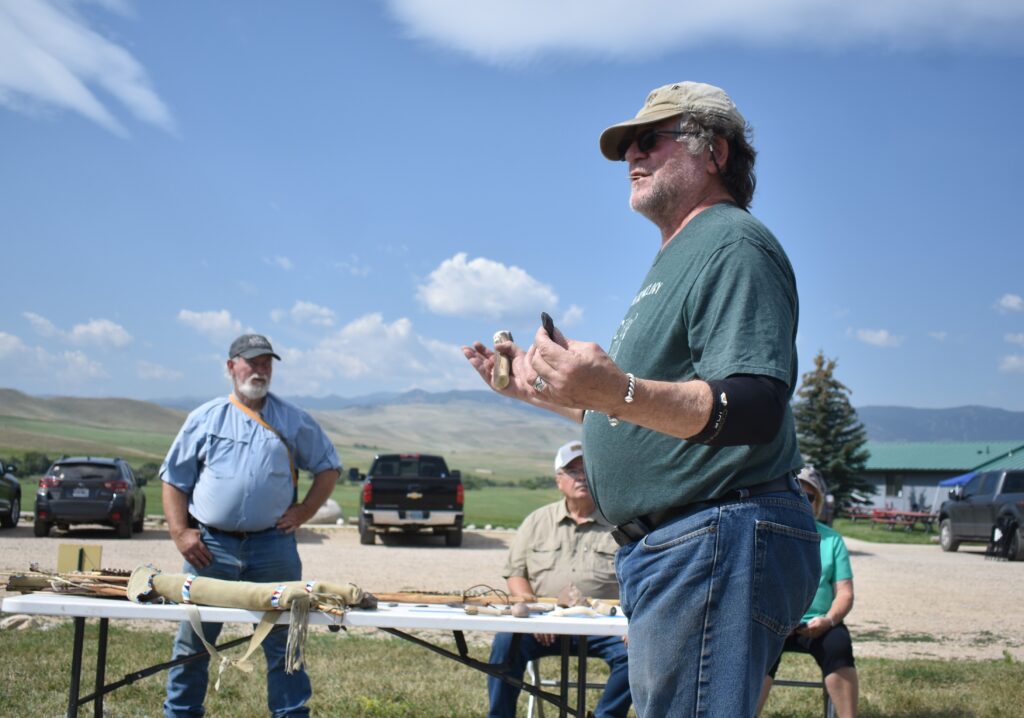News
Flint-Knapping Demonstration at Fort Phil Kearny

On Saturday, August 19, the flint-knapping station with Rick Laurent at Fort Phil Kearny drew several people to learn about how the ancient people made their stone tools.
He had several arrow and spear points, arrows, quivers and a bow on display to illustrate his talk.

He talked about the rocks used
He said that if he was an Indian out hunting, and he had a ‘blank’ arrowhead, he could refine it into a weapon but
He said that in a quiver the hunter could have several projectile points wrapped up so if they needed a new one, they would have it. They might have some that were practically finished but just need a little knapping to make them usable. There might be a half dozen in each stage of production.
He displayed some knives, saying he had used them to skin game just like the Native American’s did. He said they sometimes find broken ones at kill sites.

He displayed the stones and antlers used for knapping, and the way they used them to make the stone arrowheads and tools. He added that women’s tools were much different than arrow and spear points, and they were much more utilitarian, used for scraping hides and grinding grain for flour.
In a tribe, to be successful, everyone had to contribute. If a man grew too old or maybe too crippled to hunt, he would often contribute by making arrowheads. Others in the tribe would offer him meat or hides in exchange for arrowheads.
He also talked about shooting the bows and arrows, and how much distance they could get, which was over 100 yards. The older rifles of the army only shot around 80 yards, so the Indians could stay out of range and fire arrows. He added that the Indians could fire the arrows straight up into the air and when they came down, they would hit something.

Unlike the soldiers, who were issued ready-made ammunition for their rifles, and could buy hammers, and store-bought clothes, the Native American’s had to make their tools out of stone and prepare the hides for clothing and tent covers. The flint-knapping gave the audience a look at how much work it took for the Indians made the arrows and tools.

